
Indie video games often embody ideals that challenge the conventional game industry. Instead of pursuing traditional quests, some protagonists grapple with complex everyday issues, like fear, alcoholism and morality, which cannot be easily resolved in a six-hour video game. The archetypical video game hero is substituted with average, relatable characters and a less linear plot. Playing these games, you might not always save the world, but you will certainly navigate the complexity of human emotion.
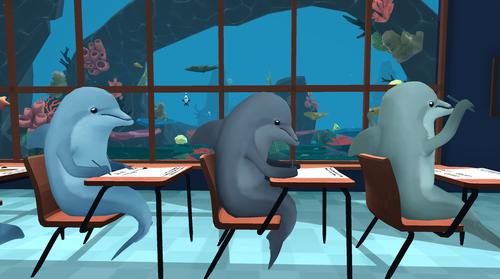
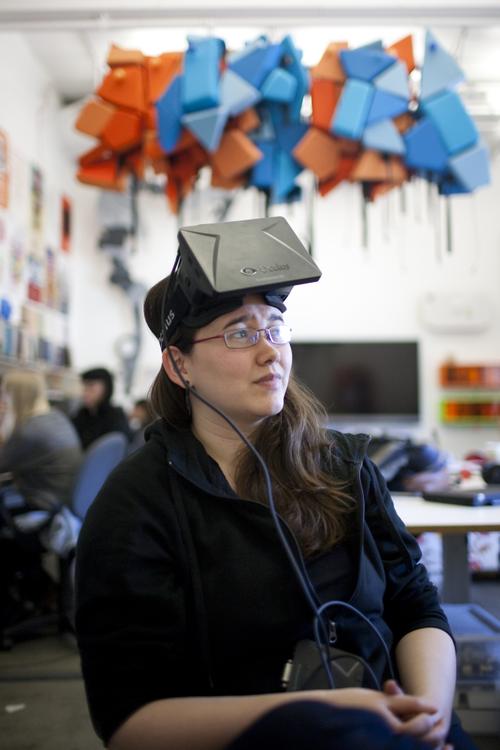
The idea was spontaneous – someone blurted out that dolphins are smart and humans are stupid. Add the concept of cheating and throw in a new piece of virtual reality technology, and Classroom Aquatic was born.
Classroom Aquatic is a humorous stealth cheating game created during an Oculus Rift game jam last August by a group including UCLA alumni. In the game, you are a human diver who is in a school of dolphins – literally. Your goal is to do the best you can on the multiple-choice quiz your dolphin professor gives you, and judging by the impossibly hard questions it asks, your best bet is to sneakily look at the other students' tests for guidance.
What sets the game apart is its use of the Oculus Rift – a virtual reality head-mounted display. While wearing the device, you can pivot to look around and see other dolphins’ tests, even leaning forward to try to get a better view.
When released, the game will feature a full story mode that places the player in a variety of situations, from sabotaging science fair projects to going to prom with two different dolphins. The game will hopefully serve as a morality tale about cheating, thrusting individuals in a situation and having them comes to term with the actions they have taken, said Remy Karns, a graduate student at USC responsible for the production and writing of the game.
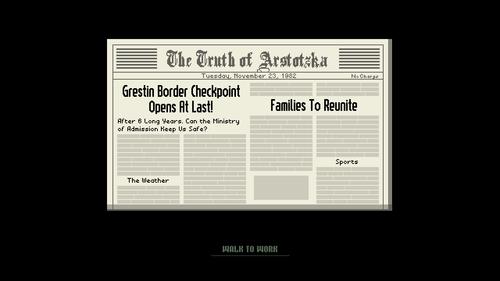
Papers, Please places you in the role of an immigration agent on the border of Arstotzka, a fictional communist country in the 1980s. Since you have won the position from the job lottery, your extended family is relying on you to support them. Every day you trudge over to the border, where you inspect the variety of people trying to enter the country. In the beginning, you simply have to inspect a passport and deny all foreigners. As the days pass, bureaucratic pressure mounts and you are faced with growing amounts of documents to sort through to determine if someone should be allowed to enter Arstotzka.
The game is hard, offering very few directions early on, and stark, simple graphics help drive the straightforward mechanics of the game. Very quickly, the core conflict of the game becomes keeping you and your family alive. As you struggle through your job, you are constantly faced with ethical dilemmas. A guard asks you to detain more people, offering a kickback every time you do so. Various entrees offer to pay you money. Others beg you, pleading to not be separated from their spouses. Then, a rebel group secretly contacts you to help overthrow the current regime.
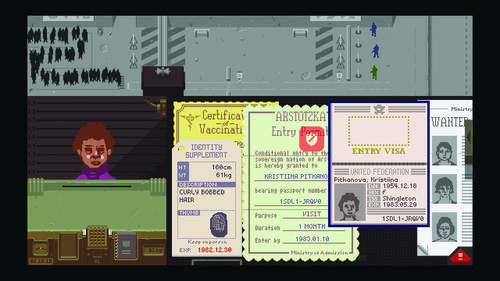
The game forces you to make difficult decisions. Cutting back on expenses like heat and food will leave your family more susceptible to illness – and in need of costly medicine. Conversely, accepting the bribes, kickbacks, and other actions might leave a sour taste in your mouth. The combinations of these decisions result in 20 different endings. These ethical decisions and the grinding monotony of the gameplay are what empower the game’s social commentary.

Papo & Yo is a fantasy adventure game where the player controls Quico, a young Brazilian boy as he explores a fantastical favela, or Brazilian shanty town, that he discovers while hiding in his closet away from his alcoholic and abusive father. Overall, the game is short, offering maybe five or six hours of gameplay with limited replayability, but employs a strong narrative to guide the player through the game. Quico soon teams up with Lula, a toy-like robot that serves as Quico’s jetpack, and Monster, a large pink monster that resembles a rhinoceros. Despite his looming shadow that chases Quico early in the game, Monster initially serves a rather comic role. Quico can trampoline off Monster’s belly while Monster sleeps to reach distant locations. Many puzzles involve luring Monster to different locations, using food as bait to have Monster solve a variety of puzzle challenges.

Even though Monster seems benign, Quico discovers that Monster is addicted to eating large green frogs nearly the size of Quico. When Monster eats these frogs, he lives up to his name, stampeding, spurting fire, and pursuing and attacking Quico. His first transformation is unexpected.
Once this discovery is made, the bulk of the game involves Quico and Monster questing to find the shaman who can cure Monster of his addiction. As the game progresses, the story slowly parallels Monster with Quico’s alcoholic father. While subtle at first, this connection becomes increasingly apparent as the game ends, transforming the game from a childish exploration of a magical favela to a navigation of Quico’s relationship with his alcoholic father.
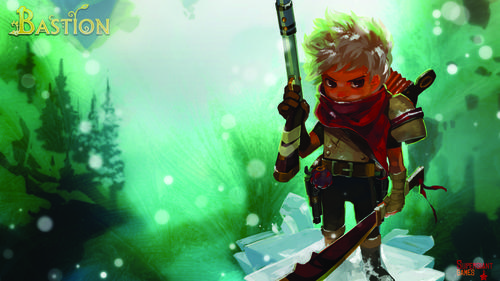
“Now here’s a kid whose whole world got all twisted, leaving him stranded on a rock in the sky.” So the narration for Bastion, an acclaimed action role-playing game, begins in the aftermath of a huge catastrophe called the Calamity. The world was just destroyed and the main character, a nameless kid, finds himself alone and the entire population turned to statues of ash. The Kid heads to the Bastion, an emergency location that everyone agreed to go to if something happens. There, he discovers one other person who survived, named Rucks, who sends the Kid off on a quest for crystal cores to power the Bastion.

The entire game is narrated by Rucks, whose country-western drawl guides you through the game, driving the story through a world filled with vibrant colors and a hand-painted feel. While exploring, the Kid meets two other survivors, Zulf and Zia. With these four dramatis personae, the game slowly evolves into a story not just about survival, but also reconciliation of the racial hatred and tension from a war 50 years ago. As the Kid, the player is given a chance to try to bridge this gulf between the two races as he discovers the mysterious cause of the Calamity.

Replaying Bastion allows for tackling additional challenges and delving into the backstory of each of the characters. You can actively modify how hard the game is by invoking a pantheon of idols to buff the enemies. The buffs range from giving the enemies regeneration to increasing their speed.